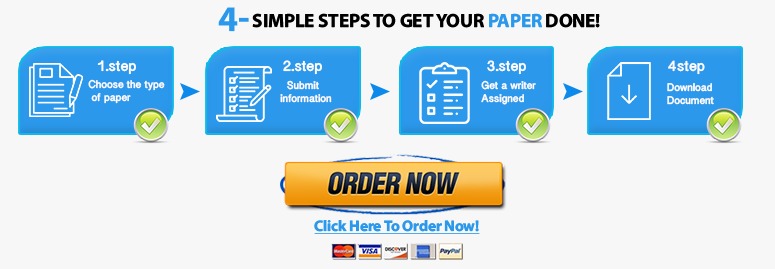Mgt 510 final exam part 2
MGT 510 Final Exam Part 2
This final exam consists of 25 multiple-choice questions and covers the material in Chapters 11, 13, and 14.
(That is what the instructions say…but the answers may come from other chapters too J)
Question 1
Companies with a global HRM orientation
Answer
[removed] | Usually provide significant extra pay for expatriate assignments. | |
[removed] | Evaluate their managers by headquarters’ country standards. | |
[removed] | Focus primarily on language training as preparation for expatriate assignments. | |
[removed] | Use similar pay and benefit packages for all international assignments. |
4 points
Question 2
The main objective of the balance sheet approach to international compensation is
Answer
[removed] | To match home and host county purchasing power. | |
[removed] | To make sure you reward international managers for their hardship. | |
[removed] | To save costs in inexpensive countries. | |
[removed] | To provide headquarters’ accountants with consistent information on salaries. |
4 points
Question 3
Companies with a multi-local strategy are most likely to have a
Answer
[removed] | A global HRM orientation. | |
[removed] | A polycentric HRM orientation. | |
[removed] | Either a ethnocentric or regiocentric HRM orientation. | |
[removed] | A geocentric orientation. |
4 points
Question 4
Home country nationals are
Answer
[removed] | Expatriate employees who come from the parent’s home country. | |
[removed] | Employees who come from a different country where he/she is working. | |
[removed] | Expatriate employees which come from the parent’s home country. | |
[removed] | Employees from foreign country who work in the country where the host company is located. |
4 points
Question 5
International Human Resource Management
Answer
[removed] | Is no different from domestic HRM. | |
[removed] | Is the application of HRM to international settings. | |
[removed] | Is the orientation to hiring international employees. | |
[removed] | Is the selection and compensation of expatriates. |
4 points
Question 6
Evidence on training for international assignments suggests
Answer
[removed] | Cross-cultural training reduces expatriate failure rates. | |
[removed] | Cross-cultural training makes people feel more comfortable but there are no bottom line effects on performance. | |
[removed] | US firms invest the most in this activity. | |
[removed] | It only beneficial for long term assignments. |
4 points
Question 7
Companies with ethnocentric HRM orientations
Answer
[removed] | Use similar pay and benefit packages worldwide. | |
[removed] | Select home country nationals for key positions. | |
[removed] | Emphasize extensive training in the company culture before allowing a manager to go international. | |
[removed] | Often use international experience as a technical qualification for high level management. |
4 points
Question 8
The process by which companies choose people to fill vacant position is
Answer
[removed] | Recruitment. | |
[removed] | Compensation. | |
[removed] | Selection. | |
[removed] | Training and development. |
Question 9
Which of the following represents one possible solution to the “Old Friends” dirty trick?
Answer
[removed] | Ignore the ploy and focus on mutual benefits. | |
[removed] | Keep a psychological distance that reflects the true nature of the relationship. | |
[removed] | Walk out of negotiations. | |
[removed] | Reveal when you plan to leave negotiations. |
4 points
Question 10
The sequential approach to concession-making
Answer
[removed] | Is very popular in Asian cultures. | |
[removed] | Is similar to the holistic approach. | |
[removed] | Implies that concession making begins only after all participants discuss all issues. | |
[removed] | Implies that negotiators expect each side to give and take on individual issues in sequence. |
4 points
Question 11
Deliberate deception, one example among some common ploys in international negotiations, refers to
Answer
[removed] | Negotiators presenting flagrant untruths either in the facts they present or in their intentions for the negotiation. | |
[removed] | Negotiators waiting to the last minute before the international negotiation team plans to go home. | |
[removed] | Negotiators making an agreement then reveal that it must be approved by senior managers or the government. | |
[removed] | One negotiator acting agreeable and friendly while his or her partner makes outrageous or unreasonable demands. |
4 points
Question 12
In competitive negotiation
Answer
[removed] | Negotiators seek out mutually satisfactory ground that is beneficial that allows both companies to win. | |
[removed] | Competitive negotiators view the negotiation as a win-win game. | |
[removed] | Competitive negotiators use dirty tricks and any plot that leads to their advantage. | |
[removed] | Competitive negotiators search for possible win situations where the outcome of the negotiation is mutually satisfactory to both sides. |
4 points
Question 13
Olfactics
Answer
[removed] | Is the use of smells as a means of nonverbal communication. | |
[removed] | Refers to communication through eye contact or gazing. | |
[removed] | Communication through the use of space. | |
[removed] | Communication through body contact. |
4 points
Question 14
If negotiators are using deliberate deception as a dirty tricks, the best way to deal with the deception is
Answer
[removed] | Not to make any concessions. | |
[removed] | To ignore the ploy and focus on the agreement. | |
[removed] | To not reveal your negotiation plans. | |
[removed] | To point out directly what you believe is happening. |
4 points
Question 15
High context languages
Answer
[removed] | Are languages in which people state things directly and explicitly. | |
[removed] | Include most northern European languages including German, English, and the Scandinavian languages. | |
[removed] | Are languages in which people state things indirectly and implicitly. | |
[removed] | Are languages where the words provide most of the meaning. |
4 points
Question 16
__________ negotiators search for possible win-win situations where the outcome of the negotiation is mutually satisfactory to both sides.
Answer
[removed] | Problem-solving | |
[removed] | Concession-making | |
[removed] | Competitive | |
[removed] | Hard nosed |
4 points
Question 17
When applying need theories in a cross-national context, managers should
Answer
[removed] | Ignore the differences in needs between nations and apply the models uniformly. | |
[removed] | Take into consideration the particular needs that people seek to satisfy in different countries. | |
[removed] | Give the same magnitude of importance to work needs and apply these motivational tools. | |
[removed] | Understand work centrality and then provide the same rewards to satisfy needs. |
4 points
Question 18
Social loafing
Answer
[removed] | Is the social process of sharing. | |
[removed] | Occurs when people prefer to work in groups. | |
[removed] | Means that everyone’s work is easier in groups. | |
[removed] | Occurs when people put out less effort when working in groups. |
4 points
Question 19
The need to maximize personal achievement refers to which type of need in Maslow’s hierarchy of needs
Answer
[removed] | Physiological needs. | |
[removed] | Self esteem needs. | |
[removed] | Self actualization needs. | |
[removed] | Security needs. |
4 points
Question 20
In a cross-national context, expectancy theory prescribes that managers
Answer
[removed] | Should specify the hierarchy of needs of workers. | |
[removed] | Identify and eliminate potential sources of inequity at work. | |
[removed] | Identify valued outcomes and convince workers that their efforts will lead to these outcomes. | |
[removed] | Punish workers for not achieving organizational goals. |
4 points
Question 21
Esteem needs refer to
Answer
[removed] | Basic survival needs such as food, water and shelter. | |
[removed] | Safety and avoidance of pain and life-threatening situations. | |
[removed] | Being loved and having friendship. | |
[removed] | Focus on respect and feelings of self-worth. |
4 points
Question 22
A manager gives bonuses to high performing foreign employees hoping that they will continue performing at a high level. This manager is using which motivational principle?
Answer
[removed] | Extinction | |
[removed] | Goal-directed | |
[removed] | Reinforcement | |
[removed] | Punishment |
4 points
Question 23
Need theories of motivation are based on the assumption that
Answer
[removed] | Motivation is a function of the individual’s beliefs of what happens if one works hard. | |
[removed] | Motivation is a result of the outcomes of one’s past behaviors. | |
[removed] | Motivation is a function of why people work. | |
[removed] | People can satisfy basic human needs in the work setting. |
4 points
Question 24
Which types of motivation theories explain motivation arising from satisfaction of needs and values combined with an individual’s beliefs regarding the work environment?
Answer
[removed] | Needs theories | |
[removed] | Work centrality theories | |
[removed] | Process and reinforcement theories | |
[removed] | Work functions theories |
4 points
Question 25
Conclusions from the World Values Survey and the European Values Survey on functions of work reveal that
Answer
[removed] | People across the world assign the same degree of importance to work functions. | |
[removed] | People across the world rate income as the most important work function. | |
[removed] | People from different nations do not assign the same magnitude of importance to work functions. | |
[removed] | Workers saw the most important function of work as providing contact with other people. |


